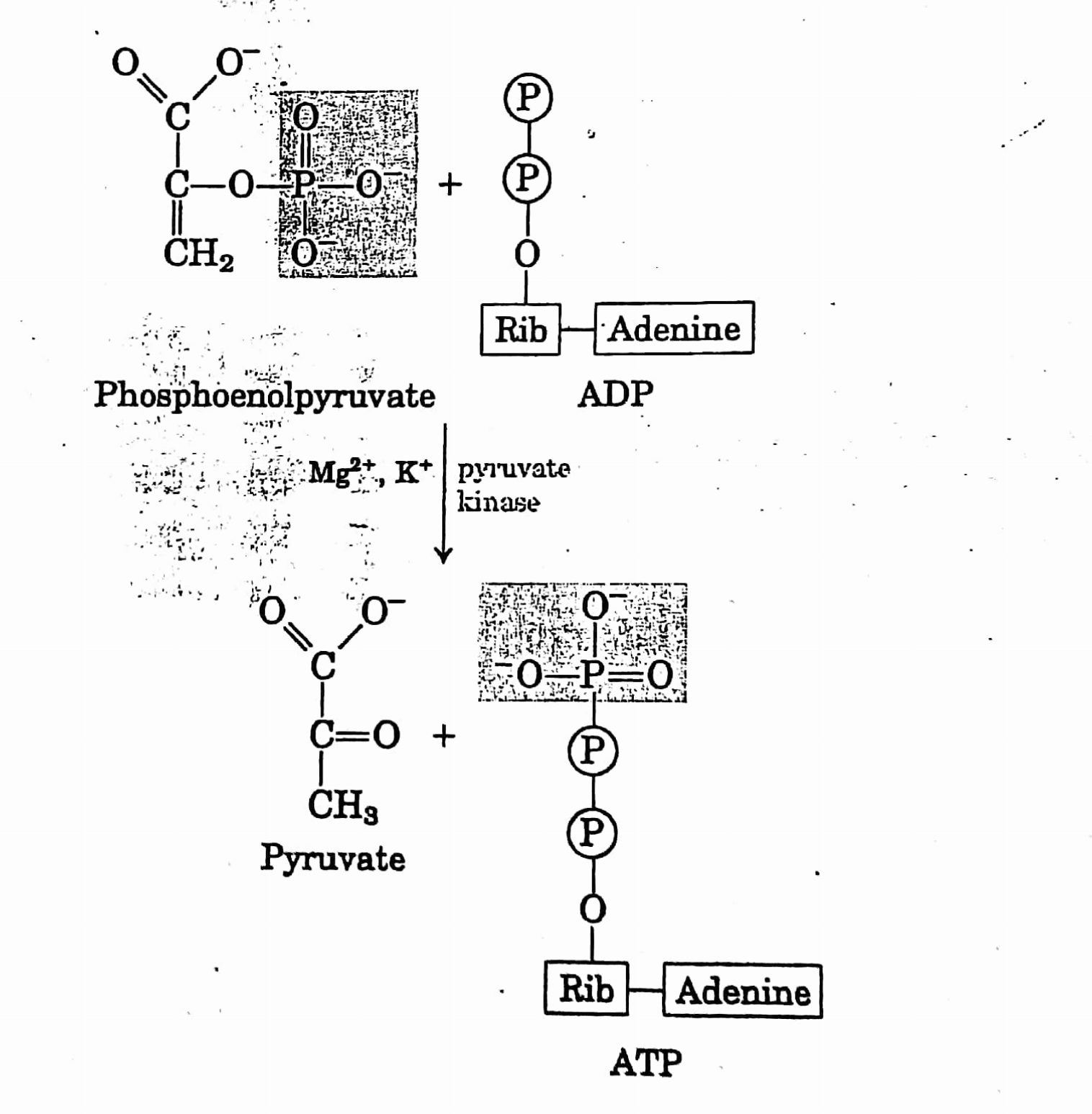
- All the living organisms whether aerobes or anaerobes, initiate the mechanism of respiration by breaking down glucose (6 carbon compound) into two molecules of pyruvate (3 carbon compound).
- This initial process that occurs in 10 steps, the first 5 of which constitute the preparatory phase and the last 5 constitute the payoff phase is called glycolysis.
- The process of glycolysis was first described by Gustav Embden, Otto Meyerhof and Parnas and therefore also referred to as EMP pathway.

The Preparatory phase:
- Phosphorylation of glucose:
- It is the first priming reaction in glycolysis.
- Glucose molecule is phosphorylated in the presence of ATP to form glucose-6-phosphate. This reaction is catalyzed by the enzyme hexokinase which requires a divalent Mg++ as cofactor. ATP (phosphoryl donor) is converted to ADP in the reaction.
- Isomerization of glucose-6-phosphate to fructose-6-phosphate:
- The enzyme phosphohexose isomerase (phosphoglucose isomerase) catalyzes the reversible isomerization of glucose-6-phosphate, an aldose, to fructose-6-phosphate, a ketose.
- Fructose-6-phosphate may be formed directly from free fructose by its phosphorylation in the presence of an enzyme fructokinase, Mg++ and ATP.
- Phosphorylation of fructose-6-phosphate to fructose1, 6-biphosphate:
- It is the second priming reaction in glycolysis.
- Fructose-6-phosphate combines with another phosphoryl group from another ATP molecule, yielding fructose1,6-biphosphate catalyzed by phosphofructokinase-1 (PFK-1) in the presence of Mg++.
- Cleavage of frucose1,6-biphosphate:
- The enzyme fructose 1, 6-biphosphate aldolase, often called simply aldolase, catalyzes a reversible aldol condensation.
- Fructose 1,6- biphosphate is cleaved to yield two different 3-carbon (triose) phosphates, glyceraldehyde 3-phosphate (GAP), an aldose and dihydroxyacetone phosphate (DHAP), a ketose.
- Interconversion of two triose phosphates:
- Only one of the two triose phosphates formed by aldolase, can be directly degraded in the subsequent steps of glycolysis.
- DHAP is rapidly and reversibly converted into GAP with the aid of enzyme phosphotriose isomerase or triose phosphate isomerase.
The Payoff phase:
6. Oxidation of glyceraldehyde3-phosphate to 1,3-biphosphoglycerate:
- Glyceraldehyde 3-phosphate combines with a phosphate group (derived from H3PO4 in the cytosol and not from ATP)) and is oxidized with the separation of two atoms of hydrogen from it to form 1,3-biphosphoglycerate which is catalyzed by glyceraldehyde3-phosphate dehydrogenase.
- Of the two hydrogen separated, one complete hydrogen atom (proton and electron) and one additional electron are picked up by NAD+ which gets reduced to NADH. The remaining one hydrogen proton or ion (H+) remains free in the cytosol.
- Phosphoryl transfer from 1,3-biphospohglycerate to ADP:
- High energy phosphate group on carbon 1 of 1,3-biphosphoglycerate is transferred to a molecule of ADP, converting it into an ATP molecule.
- 1,3-biphosphoglycerate changes to 3-phosphoglycerate due to loss of a phosphate group.
- This reaction is catalyzed by the enzyme phosphoglycerate kinase in the presence of Mg++.
- Formation of ATP directly from metabolites (substrate) is known as substrate level phosphorylation.
- Conversion of 3-phosphoglycerate to 2-phosphoglycerate (isomerization):
- Phosphate group on the third carbon of 3-phosphoglycerate shifts to the second carbon, producing 2-phosphoglycerate.
- This change is aided by the enzyme phosphoglycerate mutase in the presence of Mg++.
- Dehydration of 2-phosphoglycerate to phosphoenol pyruvate:
- 2-phosphoglycerate loses a water molecule (reversibly)in the presence of an enzyme, enolase and Mg++, and changes into phosphoenol pyruvate (PEP).
- Transfer of the phosphoryl group from phosphoenol pyruvate to ADP:
- The last step in glycolysis is the transfer of the phosphoryl group from phosphoenol pyruvate to ADP, catalyzed by pyruvate kinase.
- This process requires K+ and either Mg++ or Mn++.









